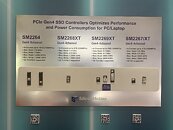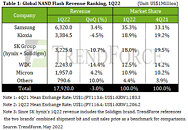Supermicro Unveils a Broad Portfolio of Performance Optimized and Energy Efficient Systems Incorporating 4th Gen Intel Xeon Scalable Processors
Supermicro, Inc., a Total IT Solution Provider for Cloud, AI/ML, Storage, and 5G/Edge, at the 2022 Super Computing Conference is unveiling the most extensive portfolio of servers and storage systems in the industry based on the upcoming 4th Gen Intel Xeon Scalable processor, formerly codenamed Sapphire Rapids. Supermicro continues to use its Building Block Solutions approach to deliver state-of-the-art and secure systems for the most demanding AI, Cloud, and 5G Edge requirements. The systems support high-performance CPUs and DDR5 memory with up to 2X the performance and capacities up to 512 GB DIMMs and PCIe 5.0, which doubles I/O bandwidth. Intel Xeon CPU Max Series CPUs (formerly codenamed Sapphire Rapids HBM High Bandwidth Memory (HBM)) is also available on a range of Supermicro X13 systems. In addition, support for high ambient temperature environments at up to 40° C (104° F), with servers designed for air and liquid cooling for optimal efficiency, are rack-scale optimized with open industry standard designs and improved security and manageability.
"Supermicro is once again at the forefront of delivering the broadest portfolio of systems based on the latest technology from Intel," stated Charles Liang, president and CEO of Supermicro. "Our Total IT Solutions strategy enables us to deliver a complete solution to our customers, which includes hardware, software, rack-scale testing, and liquid cooling. Our innovative platform design and architecture bring the best from the 4th Gen Intel Xeon Scalable processors, delivering maximum performance, configurability, and power savings to tackle the growing demand for performance and energy efficiency. The systems are rack-scale optimized with Supermicro's significant growth of rack-scale manufacturing of up to 3X rack capacity."
"Supermicro is once again at the forefront of delivering the broadest portfolio of systems based on the latest technology from Intel," stated Charles Liang, president and CEO of Supermicro. "Our Total IT Solutions strategy enables us to deliver a complete solution to our customers, which includes hardware, software, rack-scale testing, and liquid cooling. Our innovative platform design and architecture bring the best from the 4th Gen Intel Xeon Scalable processors, delivering maximum performance, configurability, and power savings to tackle the growing demand for performance and energy efficiency. The systems are rack-scale optimized with Supermicro's significant growth of rack-scale manufacturing of up to 3X rack capacity."

































